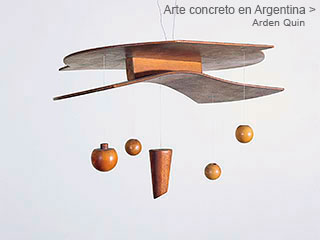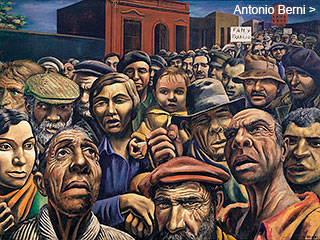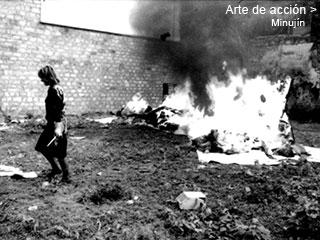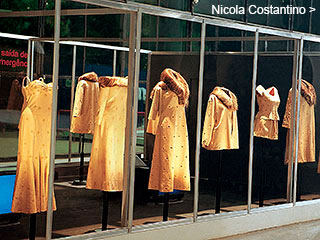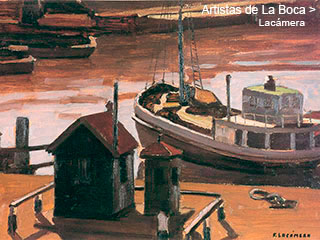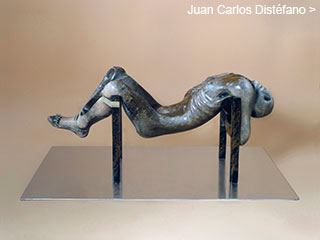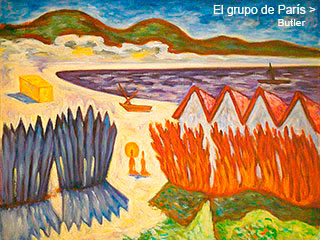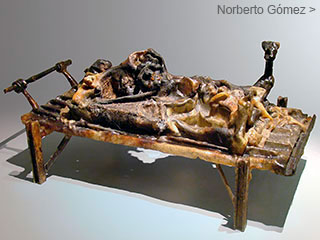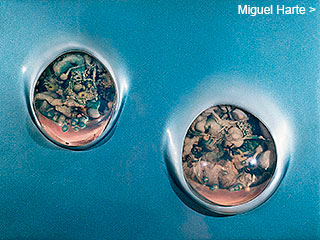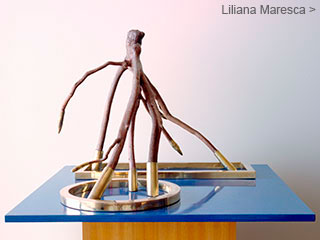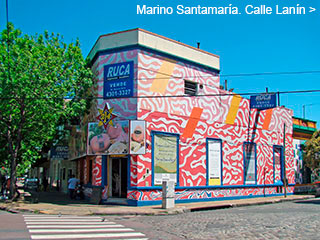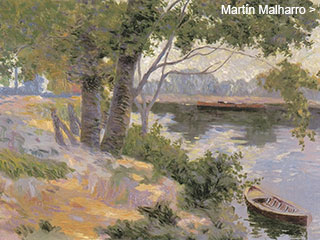Menú
Algunos dossiers
Juan Carlos
Distéfano
Distéfano
by
Adriana Lauria and Enrique Llambías
January 2003
January 2003
The dossier on Juan Carlos Distéfano spans from the time of his beginnings
as a painter to his recent works as a sculptor, a first for the CVAA. It covers
over forty years of his work and his commitment to art and reality. A special section offers a view on his work as a graphic designer, which he carried out mostly at the Di Tella Institute.
as a painter to his recent works as a sculptor, a first for the CVAA. It covers
over forty years of his work and his commitment to art and reality. A special section offers a view on his work as a graphic designer, which he carried out mostly at the Di Tella Institute.
1968
solve at the moment. And it is a shame because it constituted a metaphor of the implicit pressure in relief-paintings. There are two versions of Head and Fist: the one is polychromed in a pointillist manner, and the other one is a greenish grey, tone that stresses the formidable condensation of the volume which stylisation recalls the Sumerian art”. 
The inclusion of the fist inside the head that nonetheless would be visible by transparency will not be done until 1999. The work then receives the title Jellyfish and the procedure is thought and performed in Pablo Irrgang and Florencia Botindari’s sculpture atelier, Distéfano’s students until 1995, year in which he stops giving lessons. Regular collaborators of the artist until present day, found an ingenious technical solution that allows to see the fist immersed inside the head. Irrgang comments about this: “The fist is made like some little and precious Chinese bottles, painted from the inside. In fact, it is not there, it is hollow; we suspended a fist made of flexible silicone inside the cast and we glued it, this way the resin would not break when shrinking”.
He designs the publication of Antonin Artaud’s essay Van Gogh. The Man Suicided by Society, edited by Aldo Pellegrini.
The Museo Nacional de Bellas Artes calls Distéfano, Rogelio Polesello –who does not show in the end– and Ary Brizzi to design the illustration for the show De Cézanne a Miró
more


